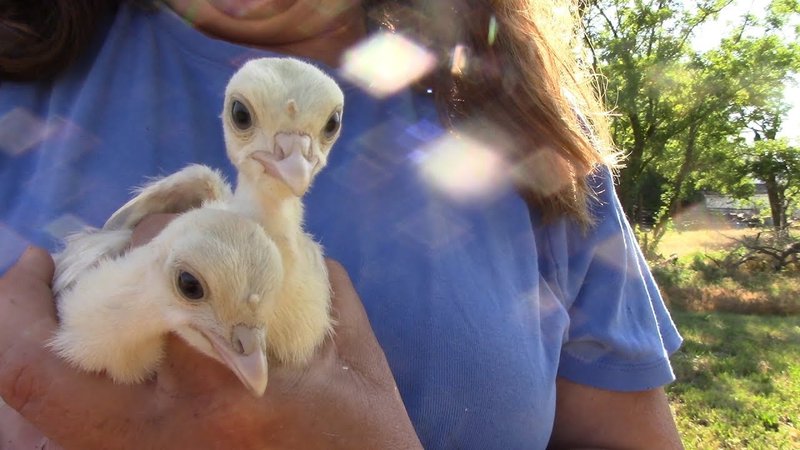
In this guide, I’ll walk you through the ins and outs of turkey gender identification. Whether you’re looking to fill your backyard with these fascinating fowls or just want to impress your friends with your newfound knowledge, let’s dive into the world of turkeys together.
Understanding Turkey Anatomy
To accurately tell the gender of a turkey, it’s crucial to understand their anatomy. Male turkeys, also known as gobblers or toms, typically have larger bodies compared to their female counterparts. They also have unique features that stand out visually.
For starters, male turkeys possess a colorful fan-shaped tail and a striking, fleshy wattle that hangs down from their neck. This wattle can change color during mating season, turning bright red, which is a clear indicator of their mood and readiness to mate. Female turkeys, or hens, are generally smaller and don’t have as vibrant markings. Their tails are less impressive, lacking the same width and flamboyance as male turkeys.
Another anatomical difference is the presence of spurs on male turkeys. These are bony protrusions located on the back of their legs, which can be used for defense or during mating displays. Hens, on the other hand, don’t have them. So, if you’re looking at a turkey and see those sharp spurs, there’s no doubt it’s a male!
Observing Behavioral Traits
Beyond their physical traits, turkeys display specific behaviors that can help you identify their gender. You might be wondering what to observe if you can’t get too close to the birds.
Male turkeys tend to be more vocal during mating season. You’ll notice them puffing out their chests and making a distinctive gobbling sound, especially in the morning or during their courtship displays. Watching a male turkey strut around, tail fanned out, is a real showstopper! In contrast, hens are generally quieter and often engage in soft clucking sounds.
During the breeding season, males will actively chase hens and attempt to impress them with their displays. If you see a turkey flaunting its feathers and performing such antics, it’s likely a male showing off for a female. This behavior is a natural part of their mating rituals and one of the clearest signs of turkey gender.
Examining Plumage and Coloration
Turkey plumage can be a significant tell when determining gender. Male turkeys are usually adorned with more vibrant and varied colors. Their feathers can sport rich shades of bronze, green, and gold, shimmering in the sunlight as they move.
On the flip side, female turkeys have a more subdued palette, often sticking to brown and tan hues. These earth-toned feathers help them blend into their surroundings, providing better camouflage to protect their young from predators. If your turkey has iridescent feathers that catch the light dramatically, you can bet it’s a male.
Another aspect to keep in mind is their age. Young male turkeys start showing their vivid plumage once they reach around 6 months, while female turkeys retain their duller colors throughout their lives. This difference can help you identify their gender at a glance, especially if you know the age of the birds.
Exploring Size Differences
Size plays a considerable role in distinguishing between male and female turkeys. Generally, male turkeys are larger and bulkier than hens. Adult toms can weigh anywhere from 15 to 30 pounds, whereas hens typically weigh between 8 and 12 pounds.
When observing a group of turkeys, if you notice some that appear significantly larger with broader bodies, those are most likely the males. If space allows, males will also have a more substantial wingspan, which is visible during their impressive displays.
The difference in size is often one of the easiest ways to identify turkey gender, especially when observing them from a distance. So, when in doubt, just compare the sizes!
Knowing the Context of Breeding Season
The time of year also plays a role in turkey gender identification. During breeding season, which typically occurs in late winter to early spring, male turkeys become much more conspicuous due to their elaborate displays. They’ll puff themselves up, fan their tail feathers, and gobble loudly to attract hens.
During this period, the behaviors of males become more pronounced, making it easier to identify them. Hen turkeys will be nurturing during this time, often gathering in groups. So, if you’re trying to figure out the gender of your turkeys, observe their interactions and behaviors around this time.
Outside of breeding season, it’s still possible to tell their gender through their physical features. However, behaviors may become less distinct, making it a tad trickier.
Using DNA Testing for Confirmation
If you prefer a foolproof method, consider DNA testing. This scientifically accurate approach can confirm a turkey’s gender without relying solely on physical traits or behaviors.
Many poultry breeders offer DNA testing, which typically involves taking a small feather or blood sample from the turkey. The lab will analyze the DNA, and within a few weeks, you will receive results detailing the turkey’s sex. While it’s a bit more involved than simply observing your birds, it provides certainty that can be especially useful for breeders or enthusiasts looking to keep careful records.
This method might feel like an extra step, but if you want clear-cut answers, it might be worth pursuing!
Understanding Why It Matters
You might be wondering why understanding turkey gender is important. For backyard farmers, knowing the gender helps manage breeding and ensure the right balance in your flock. It can also influence future production, whether you’re raising turkeys for meat or for egg-laying.
Additionally, having this knowledge can deepen your appreciation for turkeys as unique creatures. Just like any other animal, each gender behaves differently and contributes to the flock’s dynamics in unique ways. Understanding these traits allows you to form a stronger bond with your turkeys while cultivating an environment where they can thrive.
In conclusion, telling the gender of a turkey isn’t just about what you see; it’s about the entire experience of engaging with these fascinating birds. From examining their anatomy to observing their behaviors, each aspect provides insight into their unique lives. So, whether you’re watching turkeys in the wild or raising them at home, take a moment to appreciate these wonderful fowls and everything that makes them tick.

